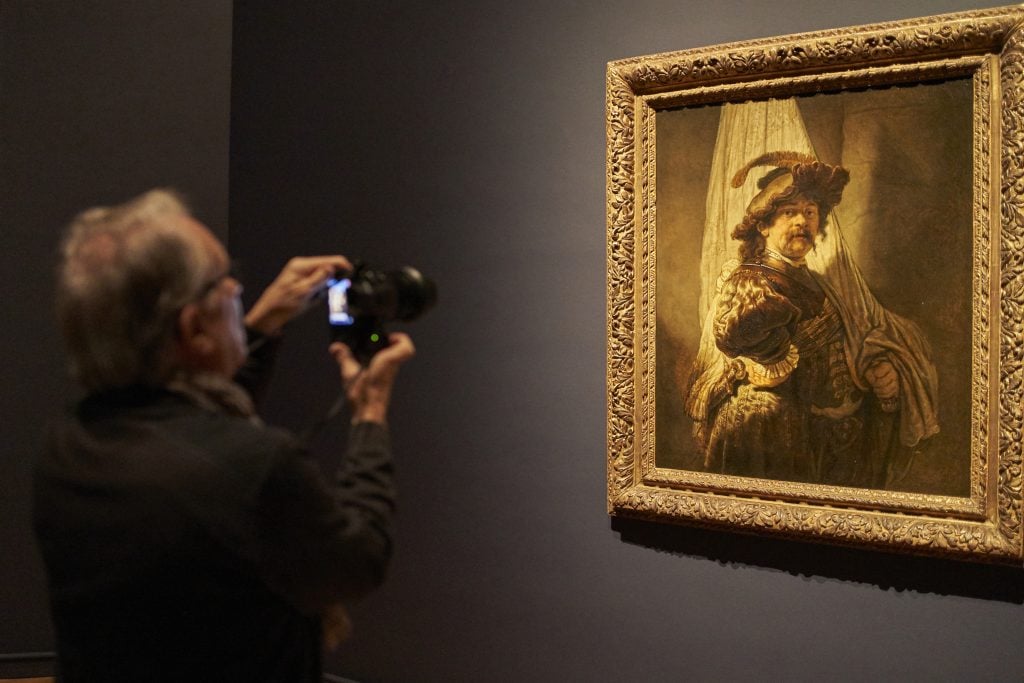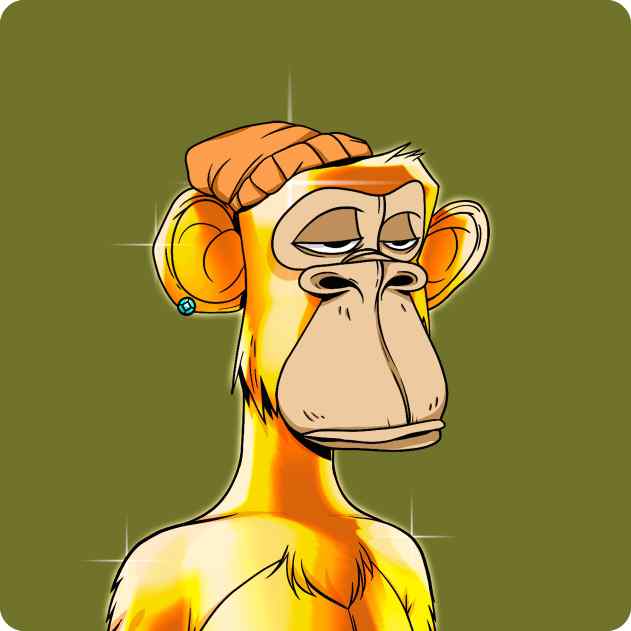Have you ever wondered what your rights are as an artist? There’s no clear-cut textbook to consult—but we’re here to help. Katarina Feder, a vice president at Artists Rights Society, is answering questions of all sorts about what kind of control artists have—and don’t have—over their work.
Do you have a query of your own? Email [email protected] and it may get answered in an upcoming article.
I’m an artist who’s interested in making an NFT and I’ve heard that I can put something in the code that ensures I get paid whenever the NFT is re-sold. How does that work?
As someone who has gone deep into NFT land, I can report that there is a lot of misinformation out there. Folks looking to land a deal will supply artists with a long list of the purported benefits associated with NFTs, and the truth is always far more complicated.
In theory, NFTs give creators the ability to set their own terms—including on resale royalties. While I could not be happier that the private sector has embraced this concept, it’s important to remember we are dealing with extremely new technology. As a result, there are plenty of ways for buyers to skirt the rules. Chief among them: NFT marketplaces are not yet interoperable. That means if a user buys on one ethereum-based platform and resells it on another, the buyer and seller can get around the resale terms by taking the transaction “off chain.”
(One notable exception is Top Shots, the NBA’s NFT marketplace for game clips sold like trading cards, which functions on its own proprietary chain called Flow. Top Shot NFTs can only be bought and sold on that chain.)
I do not doubt that future NFT technology will bring with it interoperability between marketplaces and more clear and defined rules. For the time being, however, keep creating, keep minting, and keep setting the terms for your own work. Just hope that others behave responsibly.
Taylor Swift. Photo: Andrew H. Walker/Getty Images.
Why is Taylor Swift re-recording her first six albums? I’m reading all these articles about how the new songs are better, but was her major motivation aesthetic or legal?
Taylor Swift works in mysterious ways, and it’s often hard to guess why she does what she does. How, for example, can she be so consistently blindsided by the bad behavior of the A-listers she dates when their misdeeds are the subject of 75 percent of her artistic output?
Swift is a celebrated songwriter, so you might assume that she owns all the rights to her own music. In fact, her former label, Nashville’s Big Machine, owned the master recordings for her first six albums. That arrangement wasn’t actually so odd given how young Swift was when she started out. But imagine her chagrin when, in 2019, the label was acquired for $300 million in a private equity deal by Scooter Braun, a talent manager credited with discovering Justin Bieber and with whom Swift already had beef. One year later, Braun sold the Swift masters to the Disney family’s Shamrock Holdings for another $300 million, part of a recent fervor for song catalogues as investment vehicles that we’ve covered before in this column.
You can see why Swift was upset. All joking aside, her music is very personal, so the idea that it could be sold twice for such astronomical amounts without her receiving a dime must have been infuriating. (Though it’s still a cakewalk compared to what happens to many artists at auction, of course! ARS is currently lobbying Congress for resale rights.) A helpful graphic from The Wall Street Journal demonstrates Swift’s problem here: there’s the song and the recording. Swift wrote the songs, and owns the rights to play them at concerts, but doesn’t own those original recordings that Shamrock intends to play over and over in elevators until we die.
So Swift did what she usually does when she seeks revenge: record. The results are two versions of Fearless and Red where “(Taylor’s Version)” appears after the album titles and every song on the album. There are changes that have been heralded by critics, yes, but for the most part the albums are the same, because that’s the point. She wants everyone to use these new recordings as canon, rather than the ones owned by Shamrock. Swift is covering herself, taking a strong stand for artists rights, and making tons of money to boot. It’s a narrative we love to see at ARS, even if it is somehow more conceptually complicated than Ryan Adams’s song-for-song version of 1989.

A visitor takes photographs of Rembrandt’s The Standard-bearer at the Rijksmuseum on October 11, 2019 in Amsterdam. Photo: Getty Images.
I’m writing an article on an artist. Can I include photographs I’ve taken of this artist’s work in museums? What about photographs of works in a book about the artist? I will, of course, acknowledge the source in each case.
An important question! Is this artist alive and, if not, when did they die? If it was more than 70 years ago, then their works are in the public domain and you don’t need to seek permission to use them, regardless of the article’s purpose.
When it comes to your question about photographing other books, I would discourage that. Even if the works are in the public domain, there’s no telling how many other entities might be involved, among them the original photographer and the book publisher.
In short, it’s always safest to ask for permission. If the nature of your article is scholarly and non-commercial, there is a solid chance that the owner of the intellectual property will waive any fees.

Yuga Labs, 101 Bored Ape Yacht Club (2021).
Someone recently tried to explain the Bored Ape Yacht Club to me. Am I correct in understanding that the creators sold the IP? As creators, haven’t we been told to “never sell our IP”? What gives?
Ah reader, way to call me out! You are right. I have said, many times, in this very column that a creator should never sell their intellectual property (or copyright), because after you’ve sold the painting, that’s all you have left to control the story of your work. But this situation is a little different.
For those who are unfamiliar with the celebrity-favored project, Bored Ape Yacht Club (or BAYC) is a collection of 10,000 programmatically generated NFTs that put a new twist on the idea of buying art. When a buyer purchases a Bored Ape, they purchase not just that drawing, but also its underlying intellectual property rights.
Someone I met recently purchased five Apes and created his own derivative project called “Pirate Ape Yacht Club.” Theoretically, if someone wanted to make a movie based on the Pirate Ape Yacht Club, they wouldn’t have to go through the Bored Ape creators, because my Pirate Ape collecting associate owns all the IP for his works.
Which sounds good, but it’s also almost the only instance I can think of in which such IP would be valuable. Here’s one more: maybe you’re a celebrity and people love your one specific Bored Ape so much that they want to wear it on a t-shirt? Kind of a stretch. Bored Ape’s press-shy creators have, of course, retained the intellectual property rights for their name and concept, which means they still hold the most important assets, one they recently used to sign a licensing deal with Adidas.
NFTs have created a new class of conceptual art, one in which the terms of purchase, as well as the act of purchase and resale, are all part of the performance. And while I’m not discouraging you from buying IP, I’d still advise caution when selling it, because once sold, there is no way to get it back (see: Swift, Taylor). If you do want to experiment, make sure to speak to a lawyer who can advise you on retaining other rights, much like the creators of Bored Apes did with their title.
Follow Artnet News on Facebook:
Want to stay ahead of the art world? Subscribe to our newsletter to get the breaking news, eye-opening interviews, and incisive critical takes that drive the conversation forward.
Credit: Source link
















 Bitcoin
Bitcoin  Ethereum
Ethereum  Tether
Tether  Solana
Solana  XRP
XRP  Dogecoin
Dogecoin  USDC
USDC  Cardano
Cardano  Lido Staked Ether
Lido Staked Ether  TRON
TRON  Avalanche
Avalanche  Toncoin
Toncoin  Stellar
Stellar  Shiba Inu
Shiba Inu  Wrapped stETH
Wrapped stETH  Wrapped Bitcoin
Wrapped Bitcoin  Polkadot
Polkadot  Chainlink
Chainlink  Bitcoin Cash
Bitcoin Cash  WETH
WETH  Sui
Sui  NEAR Protocol
NEAR Protocol  Pepe
Pepe  LEO Token
LEO Token  Litecoin
Litecoin  Aptos
Aptos  Uniswap
Uniswap  Wrapped eETH
Wrapped eETH  Internet Computer
Internet Computer  Hedera
Hedera  USDS
USDS  Cronos
Cronos  POL (ex-MATIC)
POL (ex-MATIC)  Ethereum Classic
Ethereum Classic  Render
Render  Artificial Superintelligence Alliance
Artificial Superintelligence Alliance  Bittensor
Bittensor  Ethena USDe
Ethena USDe  WhiteBIT Coin
WhiteBIT Coin  Stacks
Stacks  Bonk
Bonk  Dai
Dai  Arbitrum
Arbitrum  Filecoin
Filecoin  Cosmos Hub
Cosmos Hub  OKB
OKB  MANTRA
MANTRA